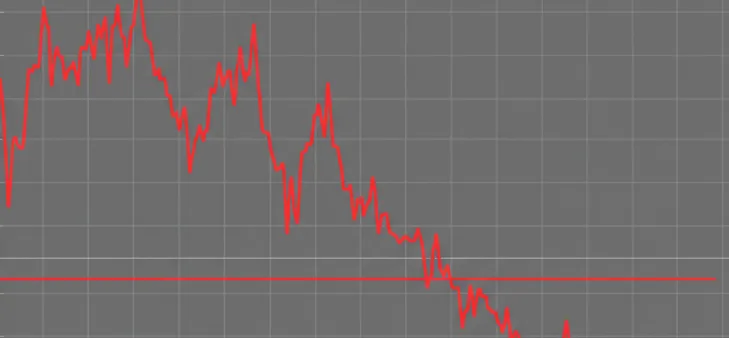Tesla, the trailblazer in the electric vehicle (EV) industry, has experienced a tumultuous journey in recent times, marked by both remarkable achievements and significant setbacks. The company’s stock price experienced a dramatic 15% plunge on March 10, 2025, wiping out billions of dollars in market value. This sharp decline comes amid a backdrop of broader market volatility and several company-specific challenges. As we look ahead, it’s crucial to analyze the factors that will shape Tesla’s future and its impact on the company’s stock price.
Challenges and Uncertainties:
Elon Musk’s Leadership and Twitter Acquisition: Elon Musk’s leadership style, characterized by its unconventional and often unpredictable nature, continues to be a double-edged sword for Tesla. His recent acquisition of Twitter has raised concerns among investors about his focus and potential distractions from Tesla’s operations.
Production and Delivery Targets: Tesla has faced challenges in meeting its ambitious production and delivery targets, particularly with its newer models like the Cybertruck and Semi. Delays and quality control issues have raised concerns about the company’s ability to execute its ambitious plans.
Competition: The EV market is rapidly evolving, with established automakers like Ford and General Motors, as well as new entrants like Rivian and Lucid, intensifying competition. Tesla will need to maintain its technological edge and competitive advantage to stay ahead in this dynamic landscape.
Regulatory and Economic Headwinds: The regulatory environment for the automotive industry is constantly evolving, with new regulations related to safety, emissions, and autonomous driving. Additionally, economic headwinds, such as rising interest rates and inflation, could impact consumer demand for EVs.
Tesla Protest and Dealership Conditions
Tesla has been facing increasing scrutiny from its customers in recent months, with a growing number of protests and complaints highlighting issues with dealership conditions and car quality. Customers have expressed frustration over long wait times for repairs, difficulties obtaining necessary parts, and a perceived lack of transparency from Tesla. Additionally, concerns have been raised about a decline in build quality, with reports of panel gaps, subpar paint jobs, and inconsistencies within vehicle interiors.
Tesla has responded to these criticisms by acknowledging the issues and promising to address them. The company has stated that it is working to improve its customer service and repair processes, and has also made changes to its production processes to address quality control concerns. However, some customers remain skeptical, and the protests continue.
It is clear that Tesla has a lot of work to do to regain the trust of its customers. The company needs to take concrete steps to improve its dealership conditions and car quality, and to communicate more effectively with its customers. Until then, the protests are likely to continue.
Opportunities and Growth Drivers:
Technological Leadership: Tesla’s technological prowess, particularly in battery technology, autonomous driving, and software, remains a significant asset. The company’s continuous innovation and development of cutting-edge technologies could solidify its position as a leader in the EV industry.
Expanding Global Presence: Tesla’s global expansion plans, including new factories in key markets like China and Europe, could drive significant growth in the coming years.
Diversification into New Markets: Tesla’s foray into new markets, such as energy storage and solar power, could provide additional revenue streams and diversify its business.
Autonomous Driving Technology: Tesla’s Full Self-Driving (FSD) technology, despite its challenges, holds immense potential. If the company can successfully develop and commercialize this technology, it could revolutionize the automotive industry and unlock significant value.
Outlook for TSLA Stock Price:
Given the numerous factors at play, predicting the future of TSLA’s stock price is not easy. However, they have grounds to make a strong comeback, given their industry experience. This doesn’t mean they can continue to ignore issues and get comfortable, though. With much of TSLA’s competition ramping up, they can just as easily find themselves in a David v.s. Goliath standoff. We all know how Goliath’s situation turned out. Let’s take a look at Bullish and Bear scenarios.
Bullish Scenario: If Tesla can overcome its production challenges, maintain its technological leadership, and successfully navigate the competitive landscape, its stock price could experience significant growth. The company’s ambitious expansion plans and potential for autonomous driving could drive substantial value creation.
Bearish Scenario: If Tesla fails to address its production issues, faces increased competition, or encounters regulatory hurdles, its stock price could continue to decline. Additionally, any further distractions or controversies related to Elon Musk’s leadership could negatively impact investor sentiment.
Neutral Scenario: A more moderate scenario could see TSLA’s stock price consolidating or experiencing modest growth. This scenario would likely involve a mix of positive and negative developments, with the company’s performance balancing out the challenges it faces.
Production Challenges: Tesla has faced production hurdles, particularly with its new vehicle models. Delays and quality control issues have raised concerns about the company’s ability to meet demand.
Ultimately, the future of TSLA and its stock price will depend on the company’s ability to execute its strategic vision, adapt to changing market dynamics, and maintain its position as a leader in the EV industry. Investors will need to carefully weigh these factors and assess the company’s progress in addressing its challenges before making investment decisions.
